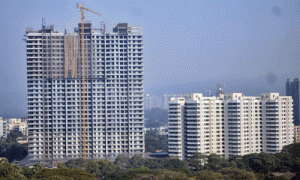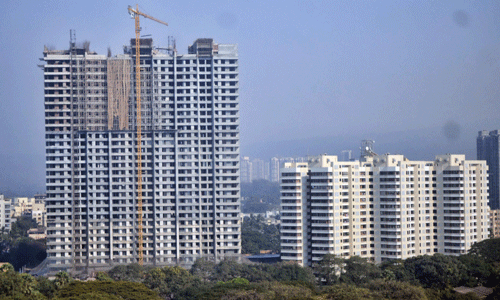 The Finance Ministry is building safeguards to ensure realty companies do not misuse the external commercial borrowing (ECB) window announced in the Budget by diverting the money.
The Finance Ministry is building safeguards to ensure realty companies do not misuse the external commercial borrowing (ECB) window announced in the Budget by diverting the money.
According to sources the modalities are being worked out for implementation of the Budget announcements. These were likely to specify the projects and also the developers who would be allowed to utilise the ECB facility. The Finance Ministry has cleared the way for implementation of the ECB announcements for power, roads and airlines. For affordable housing, the go-ahead is expected in two weeks.
Noting ECB is not allowed in real estate as a general rule but the Budget had proposed to allow these for low-cost and affordable housing projects so that the cost of borrowing could be lower for the segment, the official said the guidelines would be framed to ensure this.
Track2Realty has learnt that an escrow account may be made mandatory to check that ECB funds go only for affordable housing and are not routed elsewhere. The ministry is talking to various entities, such as the Housing Ministry, NAREDCO, the National Housing Bank (NHB) and RBI. ECB is most likely to be routed through a channel, like the NHB.
NHB CMD R V Verma has confirmed that ECBs may be routed through it, as it had an apex role and aggregate lending would provide ‘economies of scale’ to NHB, ensuring no risk was transferred to the sector. Verma did not divulge details today, saying the matter was being looked into by the Ministry of Finance.
Real estate bodies want a clear definition of affordable housing. “There needs to be clarity on the definition and eligibility criteria, and the guidelines should be practical. Otherwise, allowing ECBs would just be another statement to please people,” says Lalit Jain, Chairman, CREDAI.
However, Sachin Sandhir, Managing Director-South Asia of RICS is not convinced with the argument to allow ECB in the segment. “First, the government needs to give incentives to developers to go for affordable housing, such as low development fees, stamp duty exemption and tax rebate.” Allowing additional sources of funds through ECB is step two. Step one is not complete, so step two does not seem to be of a great benefit, and attracting funds for low-cost housing will be a challenge, he says.
The Ministry of Housing and Urban Poverty Alleviation (MHUPA) defines affordable housing where the size of a unit ranges from 300 sq ft to 1,200 sq ft, and 25 per cent of the 300 sq ft units are reserved for economically weaker sections (300 sq ft for EWS, 500 sq f for the low-income group (LIG) and 600-1,200 sq ft for the middle-income group (MIG).
Section 35 AD of the Income Tax Act defines affordable housing; a couple of the criteria being “at least 90 per cent of the total allocable rentable area of the project shall comprise of affordable housing units of EWS, LIG and MIG categories”, and “at least 30 per cent of the total allocable rental area of the project shall comprise of affordable housing units of EWS category”.
NAREDCO has recommended the finance ministry apply the affordable housing definition of MHUPA for allowing ECB, as the I-T 35AD definition talks about 30 per cent of the floor area ratio for EWS, and does not define size or number of units for these.





